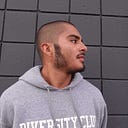Aerogel: Seaweed & NHS
Week #11: Alginate Selection & Additional Chemical Linking
Preface ✨
Hello everyone!
My intentions for writing these articles are:
- Explain technical information about aerogels in simple terms (to the public)
- Store information and habits for my future self and others (in <7 minutes)
Coolio? Sweet. Enjoy the series :-)
TL;DR Of Brown Seaweed Selection🌱
Note: This week’s article will be a short one. Why? We will transition more into the problem of heavy metal ions & why one should care about this rising concern.
Brown algae (Phaeophyta) is one of the world’s most abundant sources of carboxyl (COOH) & hydroxyl (OH) groups. But there are many breeds (types) of brown algae in the ocean.
Question:
Which type of brown algae should you use to build the filter?
(Why: We’ll use Sodium Alginate as the primary base of the filter. Sodium alginate is commonly extracted from brown algae because the content of alginic acid in algae ranges from 11 to 60% of the material.)
The most common brown algae are:
- Sargassum Weed
- Rockweed
- Giant Kelp
- Fucales
- Dictyotales
- Ectocarpus
- Durvillaea Antarctica
- Chordariales
The total amount of brown algae is 124 types. 💥
Preferably, utilize will be Giant Kelp & Sargassum Weed.
Sargassum Weed is the brown seaweed/algae that wash up on the beaches of California & Florida.
Giant Kelp is the most abundant brown algae on Earth.
But, Carlos, are seaweed and giant kelp the same thing?
Almost. The important difference between kelp & seaweed is:
- Seaweed is divided into three categories: red, brown, & green seaweeds
- Giant Kelp is always classified as a brown seaweed
It all depends on what type of seaweed one uses. It’s always brown seaweed if one uses giant kelp. (The Giant Kelp Color Will Not Always Be Brown)
The Final Cross-Linker: NHS ⚛️
NHS is an acronym for the cross-linking group N-Hydroxysuccinimide.
NHS is useful for converting carboxylic acids (COOH) into an activated acid (carboxylate ion | COO-). This can allow for the carboxylate ion to react with amine groups (NH2) to form amide groups (R=O-NH2)
It uses an additional chemical group called EDC to “combine forces” with NHS to convert all carboxylic acids in sodium alginate into amides. This creates an effective & efficient structure for the aerogel skeleton.
EDC is: 1-Ethyl-3-[3-dimethylaminopropyl]carbodiimide hydrochloride
The difference between the two chemicals lies in their chemical structure/properties. NHS “supercharges” EDC & increases mediated/controlled coupling of carboxylic acids & amines. The reason EDC & NHS work together is that NHS allows for carbodiimide crosslinking reactions to occur if carboxylate ions are activated.
EDC is a water-soluble carbodiimide. It’ll work in the lab & the real world!
EDC is also unstable in aqueous solutions because of the “leaving group” (the chemical compound/molecule that will leave the reaction). Therefore, NHS is required for the stabilization of the chemical compound.
(Read this article if confused or curious about how the reaction works)
Final Technical Clarifications Are Complete. ✔️
© 2023 by Carlos Manuel Jarquín Sánchez. All Rights Reserved.
